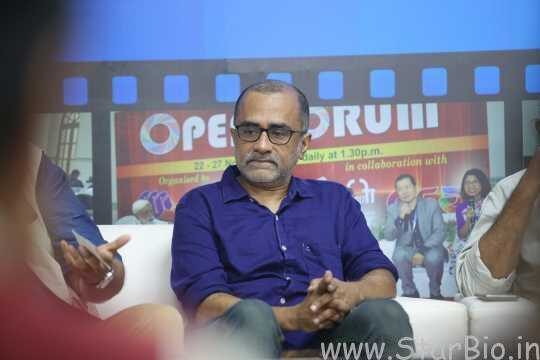What do the Hindi films Manto, Gold, Sanju, Pad Man, Marathi film Aani… Dr Kashinath Ghanekar and Telugu film Mahanati have in common?
Well, for one, they were all released this year. And they are all biopics on public figures.
While biopics are being made by the dozen since the success of Bhaag Milka Bhaag (2013) and Mary Kom (2014), they often bring up the question: how much fact and how much fiction?
Rahul Rawail, chairman of the Indian Panorama (Features) jury, gave the example of Padmaavat (2018), saying it was a work of pure fiction. Yet, the film was involved in a controversy last year over the portrayal of rani Padmini played by Deepika Padukone.
“I read a book that said the siege of Chittor by Alauddin Khilji was not for rani Padmini,” Rawail said. “Though he was obsessed with her, it was the raja [king] he wanted, not the rani [queen].” He also gave the example of Bhaag Milkha Bhaag, “which had serious changes from what actually happened”. He said additions on the part of the directors is not wrong as long as facts are not being changed.
Rawail was speaking at the Open Forum on ‘Directors’ Take — Biopics: How much fact and how much fiction?’ The Open Forum was organized by the Indian Documentaries Producers’ Association at the 49th International Film Festival of India (IFFI) in Goa.
Rawail was joined by directors Rishi Prakash Mishra, Shaji N Karun and Akashaditya Lama and academician Sandeep Chatterjee.
Mishra, director of Ajab Singh Ki Gazab Kahani (2017), which was also a biopic on a less-known Indian Revenue Service officer, said cinema has a big responsibility to give out a message, but commercially it is not possible not to add a fictional element. “We have to maintain a balance,” he said. “If it is not commercial, we cannot make cinema.” Rawail agreed that just showing the reality may not make for an interesting biopic.
Olu (She) director Shaji N Karun highlighted that though facts are important, how you present them is the most important. Giving the example of the film Amadeus (1984), which was a biopic of legendary composer Wolfgang Amadeus Mozart, Shaji said. “The construction and placing images is important. The beauty of the film is how the screenplay is made, how the colours are being used, how the characters are developed. Films have a responsibility to tell the truth.”
On biopics, Chatterjee said it is important to revisit history and biopics are a great way to do that. “We need to get to know our past,” the professor from the Film and Television Institute of India (FTII) said. “This is why we get into a form like biopics.
“Having said that, it is quite akin to documentary filmmaking,” he continued. “Of course, we live in an era where a lot of borders, fact and fiction, are merging. At the same time, when you are handling something that belongs to the realm of the real, you have to be responsible. You cannot tell a lie. You cannot afford to misinterpret certain things.
“I feel we are living in an era of branding, especially with ‘Bollywood’ [mainstream Hindi cinema] around. We are not short of stories. If you are trying to deal with reality, don’t compromise for branding. One should be more careful while making biopics.”
The problem of controversies as in the case of director Sanjay Leela Bhansali’s Padmaavat, which was a work of fiction, also exists.
“As a teacher in cinema, we have to make students aware that cinema is potentially dangerous,” Chatterjee, who heads the direction department at FTII, continued. “Images can be devastating in the wrong hands. It is as powerful as nuclear energy. It has to be used in an effective way by the right hands. If you are not responsible, it can cause great harm.
“We don’t realize often that if we portray something wrongly in a cultural environment, what kind of impact it can have. So we try to make our students aware of that.”
Chatterjee also added that it is a question of truth and that’s why we need to refer to history. “Truth should never be commodified. We should be better off telling stories. The matter of truth is better handled by documentary filmmakers,” he said.

